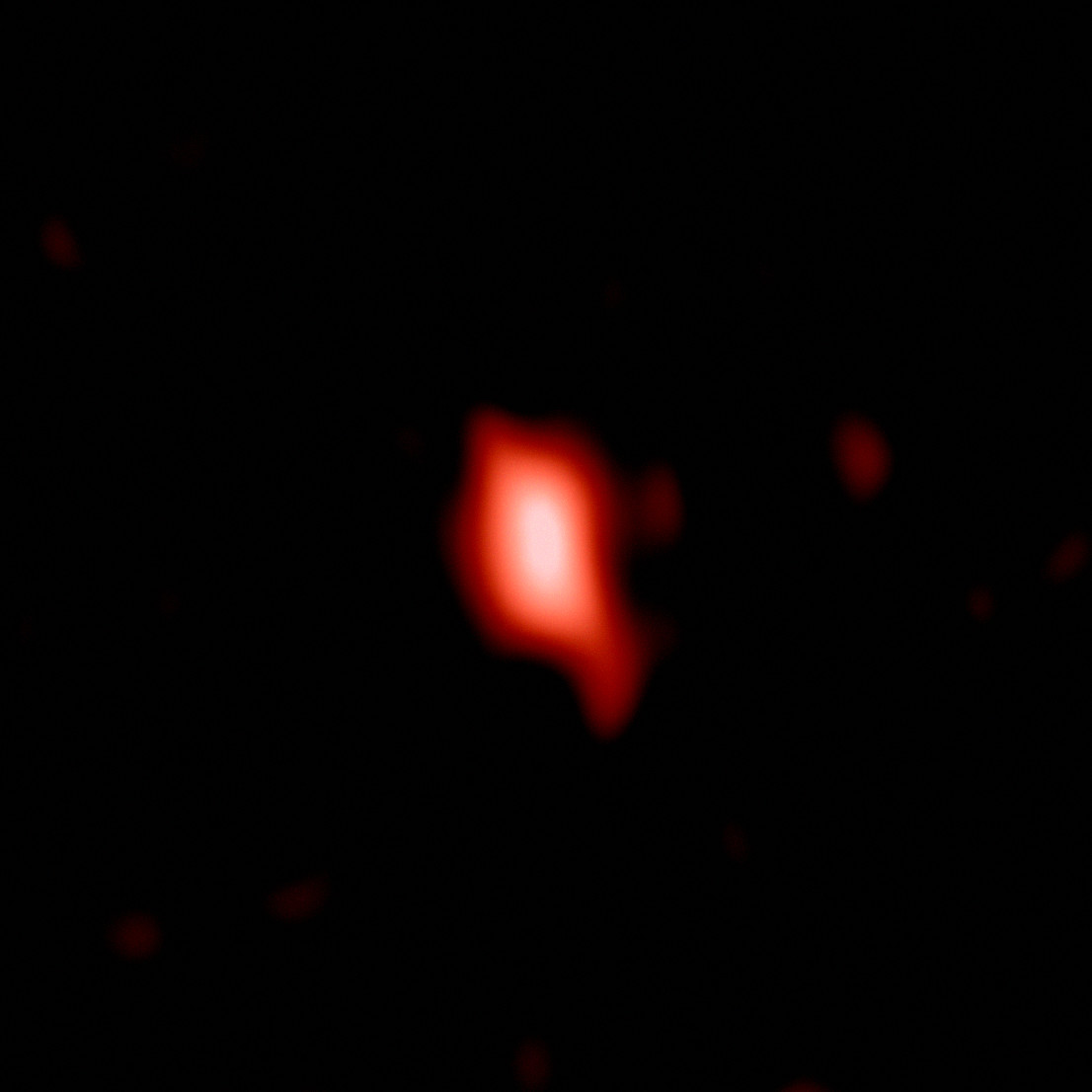Star formation detected in the baby universe
At first glance, MACS1149-JD1 is just a small dot of light. On second look, analyses by the Atacama Large Millimeter/Submillimeter Array (ALMA) and the ESO’s Very Large Telescope (VLT) show that it is evidence for very early star formation in the universe. The light from MACS1149-JD1 has taken up to 13.3 billion years to reach us. The galaxy is thus only 550 million years old.
However, as ALMA showed, it already contains ionized oxygen. That is only possible if stars have already been shining there for a long time. With the help of a computer model, astronomers have determined that star formation must have started there only 250 million years after the big bang – which is much earlier than previously thought.
In the videos below, you can watch how researchers imagine star formation in MACS1149-JD1.
The state of the stars MACS1149-JD1 raises the question, according to the ESO, of “when the very first galaxies emerged from total darkness. By determining the age of MACS1149-JD1, the team has effectively shown that galaxies existed earlier than those we can currently see directly.”
Richard Ellis, senior astronomer at University College London and co-author of the work, concludes: “Determining when cosmic dawn occurred is akin to the holy grail of cosmology and galaxy formation. With these new observations of MACS1149-JD1, we are getting closer to the birth of starlight! Since we are all made from recycled star material, this is really also our own origin.”

